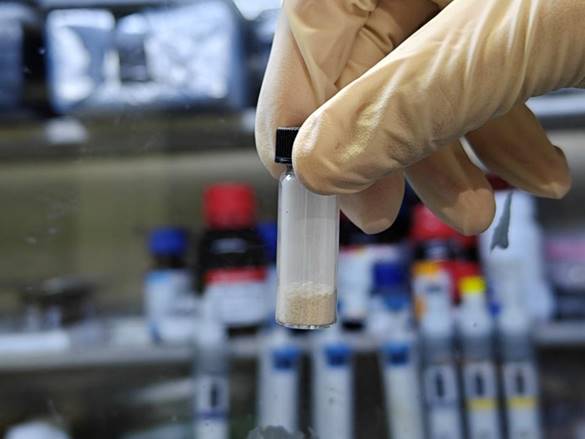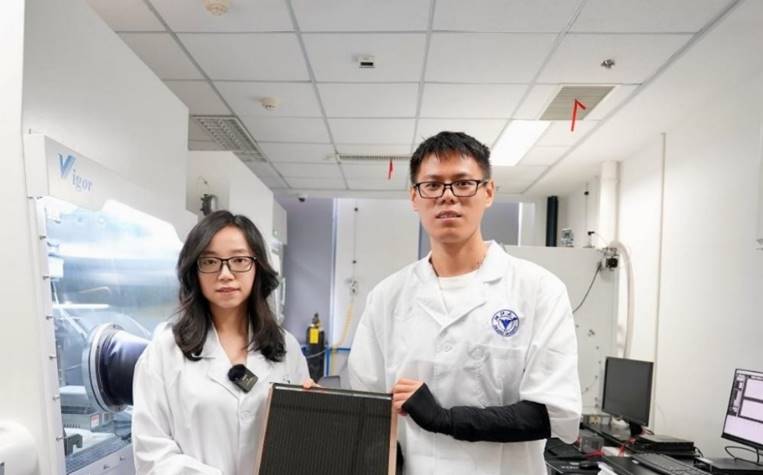As the world transitions from fossil fuels to green renewable energy, solar photovoltaics have emerged as a leading clean energy technology. Among these, perovskite solar cells have captured immense attention due to their superior photoelectric conversion efficiency and cost-effectiveness. However, their stability remains a major hurdle, with prolonged use leading to degradation and failure to meet industrial reliability standards.

In a groundbreaking study, a research team led by XUE Jingjing from the School of Materials Science and Engineering at Zhejiang University has designed a novel molecular material with a conjugated backbone free of heteroatoms. This innovative material not only enhances the photoelectric conversion efficiency of perovskite solar cells but also significantly extends their lifespan, as demonstrated in various accelerated aging tests. The research findings were published in an article titled “Peri-fused polyaromatic molecular contacts for perovskite solar cells” in Nature on July 24.
A new molecular structure
To better understand the structure and working principle of a perovskite solar cell, we could compare it to a “hamburger” as thick as a human hair. In this analogy, the middle layer — the perovskite material — is the power-generating core. The layers above and below it are the hole transport layer and the electron transport layer respectively. These layers efficiently transmit and collect photo-generated holes and electrons to the electrodes. With the “meat” in the middle and the “buns” on either side, connected via wires to the positive and negative electrodes, a complete solar cell unit is formed. When sunlight strikes the perovskite layer, electron-hole pairs are created, effectively separated and collected through the transport layers, ultimately producing electric current through an external circuit and completing the power generation process.
The selection of materials and the interface design for the transport layers directly impact the solar cell’s photoelectric conversion efficiency. In this study, the research team focused on the hole transport layer.
Conventionally, organic small molecules containing heteroatoms, such as nitrogen, sulfur, and oxygen, are used as hole transport layer materials. These molecules generally exhibit good charge transport properties, enabling efficient hole extraction and transport between the perovskite layer and electrodes. However, these heteroatom-doped organic molecules are prone to chemical reactions under working conditions, limiting the device’s operational performance and stability.
“We aimed to construct a conjugated core structure with intrinsic stability while ensuring efficient charge transport. This is crucial for enhancing the long-term stability of perovskite solar cells,” said XUE Jingjing.
The research team designed a novel all-carbon-based conjugated backbone structure named Py3 for a robust molecular contact.Unlike previously reported molecules for selective contacts, Py3 features a conjugation core of pyrene without any heteroatom substitution while expressing exceptional electronic properties at the interface. Its peri-fused polyaromatic structure is chemically inert and conformationally rigid, allowing for a secured molecular interface for efficient charge extraction and contributing to the improved performance of the molecular contacts.
A “serendipitous” discovery
According to XUE Jingjing, this discovery sprang from an accidental surprise.
The story began with an experiment driven by curiosity. ZHAO Ke, the lead author of the paper, constructed perovskite solar cells using a commercially available molecular material. Despite its mediocre performance, the notable all-carbon conjugated structure devoid of heteroatoms marked a significant departure from conventional wisdom. Sensing a potential breakthrough in materials science, XUE Jingjing saw this as a promising path forward. “Typically, we don’t expect all-carbon backbones to exhibit such a strong selective charge-transport capability. This perhaps explains why, although heteroatom doping is perceived as flawed, no one has attempted an all-carbon approach,” said XUE Jingjing.
She subsequently redesigned and modified the molecular structure, resulting in Py3 — a very simple yet previously undocumented molecule composed of four rings.

Evaluating the performance of a solar cell often involves two key indicators: photoelectric conversion efficiency and stability. Stability, from a broad perspective, refers to how long the cell can operate under working conditions without efficiency degradation, akin to an expiration date.
At the molecular level, stability comprises two aspects — intrinsic molecular stability and stable intermolecular stacking. Much like stable construction requires each individual building block to be intact and the overall structure to be robust, the simple yet highly chemically inert and structurally rigid Py3 fulfills both conditions. It demonstrates superb hole transport performance at the interface. In-depth temperature-dependent spectroscopy studies reveal considerably strengthened intermolecular stacking and suppressed anharmonic interaction in Py3. Additionally, perovskite solar cells constructed with Py3 achieve a photoelectric conversion efficiency of 26.1%. The targeted devices show a projected T90 (the time for a solar cell to degrade to 90% of its initial efficiency) of over 10,000 hours in different accelerated-ageing tests.

“We hope this discovery of stable all-carbon-based new structures will inspire further unconventional molecular design research in the field of organic optoelectronics. Meanwhile, we look forward to bringing perovskite photovoltaic technology closer to industrialization with these stable new structures,” XUE Jingjing concluded.
(From ZJU NEWSROOM)

